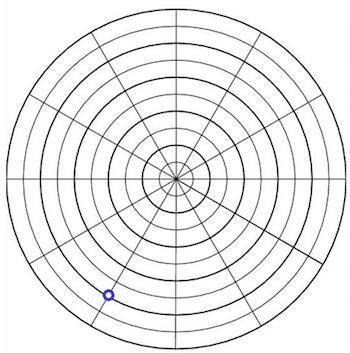
Mathematics, 12.08.2020 04:01, JeroMii
For the following graph, state the polar coordinate with a positive r and positive q (in radians). Explain your steps as to how you determined the coordinate (in your own words). I'm looking for answers that involve π, not degrees for your angles. State the polar coordinate with (r, -q). Explain how you found the new angle. State the polar coordinate with (-r, q). Explain how you found the new angle. State the polar coordinate with (-r, -q). Explain how you found the new angle.


Answers: 3
Other questions on the subject: Mathematics


Mathematics, 21.06.2019 21:00, noahwaitsowl357
Evaluate 5 + 6 · 2 – 8 ÷ 4 + 7 using the correct order of operations. a. 22 b. 11 c. 27 d. 5
Answers: 1

Mathematics, 21.06.2019 21:30, peytonamandac9114
Ahypothesis is: a the average squared deviations about the mean of a distribution of values b) an empirically testable statement that is an unproven supposition developed in order to explain phenomena a statement that asserts the status quo; that is, any change from what has been c) thought to be true is due to random sampling order da statement that is the opposite of the null hypothesis e) the error made by rejecting the null hypothesis when it is true
Answers: 2
Do you know the correct answer?
For the following graph, state the polar coordinate with a positive r and positive q (in radians). E...
Questions in other subjects:


Biology, 27.09.2019 11:10



Chemistry, 27.09.2019 11:10

Mathematics, 27.09.2019 11:10

History, 27.09.2019 11:10

Business, 27.09.2019 11:10

English, 27.09.2019 11:10






